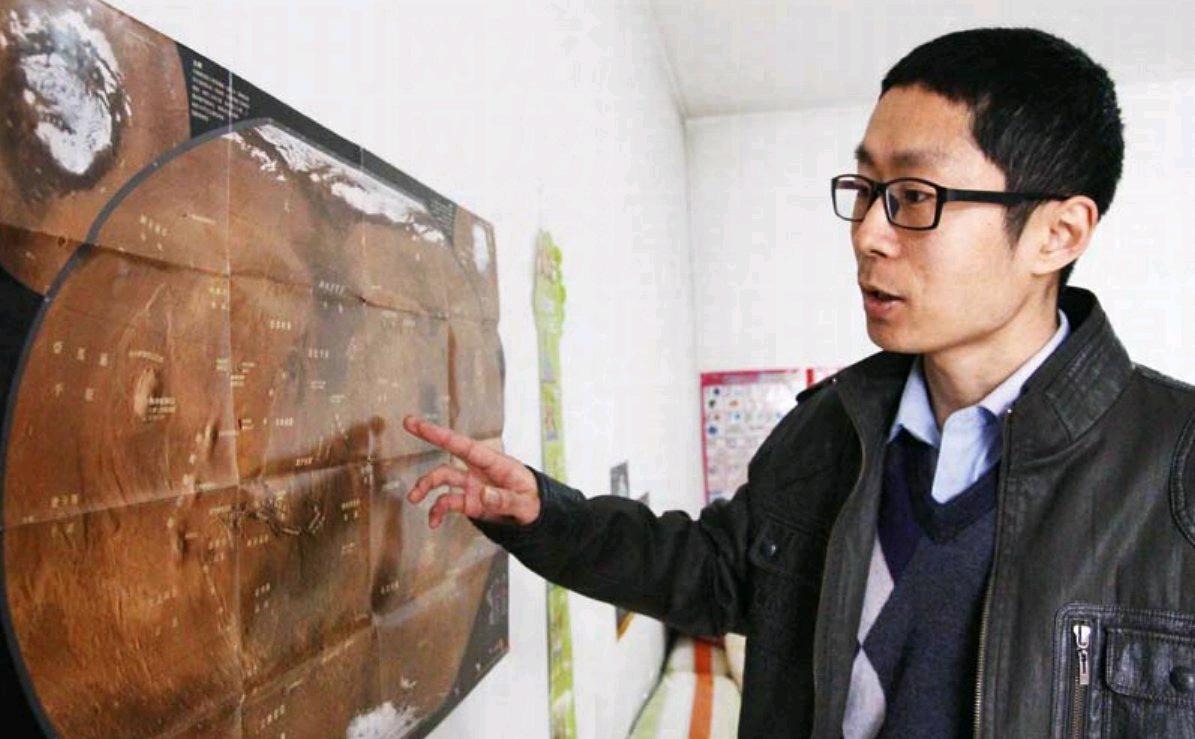Mission to Mars
by+Wang+Hongliang
Global 100
Starting from publicity, registration and announcement of 100 hopefuls selected from a massive pool of applicants, the Mars One project has already been going on for two years. One of the 100 candidates, Li Dapeng remembers learning of the spaceflight project on the internet in February 2013, which aimed to land humans on Mars and establish a permanent human colony there. According to its plan, in 2024, after eight years of strict training, four astronauts will land on Mars for a one-way mission.
The plan was formulated by Mars One, a non-profit organization based in the Nether- lands. The organization is led by Dutch entrepreneur Bas Lansdorp. In 2011, after reading Packing for Mars: The Curious Science of Life in the Void, a non-fiction work by science author Mary Roach, Lansdorp made the decision to launch the project. He visited scholars and experts mentioned in the book as well as other researchers on Mars before forming a team. Lansdorp announced plans for the private spaceflight project in early 2013.
Life in a Small Town
Born in 1982, Li Dapeng now works for the local forestry administration in Handan City, Hebei Province. He was admitted to Beijing-based China Agricultural University in 2001. After graduation, he returned to his hometown to work for a county-level forestry administration. However, he was not content with quiet life in a small town. In 2007, while promoting the upcoming Beijing Olympics, China Central Television (CCTV) carried out a nationwide competition to recruit coxswains to compete in rowing. Every province nominated 10 candidates, who competed in a series of elimination tests on TV. Although he almost knew nothing about rowing, Li registered after looking up information online and was selected as one of 10 from Hebei Province.
Before the reality show aired, more than 300 candidates from all over China assembled in Kunming for intensified training. Li managed to rank in the top 20 after a series of knockout matches. When the 2008 Beijing Games were held, he served as a volunteer in the rowing venue. In some ways, this experience set the psychological foundation for Lis propulsion to the Mars 100 list.
Mars Dream
The rowing show wasnt life changing. He got married and soon had a son, and the years passed not unlike most people his age. In late 2009, he was transferred to work in Handan City from the county nearby. Everything seemed good, but he couldnt find contentment with “ordinary”life. After reading about Lansdorps spaceflight project to Mars, Li began reading a wide range of material related to Mars, chatted with other curious people on the internet, and then made the decision to apply. The application requirements seem attainable for many: anyone on earth above 18 years old.
As requested by the official website of Mars One, Li completed all procedures including email registration, paying a registration fee, uploading a one-minute video, and completing a questionnaire. The registration fee varied depending on country. For applicants in China, the fee was US$11. The international registration website provided nine languages, including Chinese, which made Li more comfortable and confident because his English wasnt great at the time. He chose to make the required one-minute video in Chinese. But still, he learned how to add subtitles and captioned his video with an English translation. He wanted to make everything perfect.
Candidates
Mars One started drawing massive attention in April 2013 after it held a press conference in New York. Both BBC and The New York Times conducted separate interviews with Lansdorp. Contrasting the Chinese media, which focused discussion on whether the project was a scam, foreign media maintained a wait-and-see attitude, focusing discussion on possibilities of a reality show based on the project.
In January 2014, Mars One project announced its list of 1,058 finalists. These candidates received emails from the project and were asked to submit health records. After more waiting, in late 2014, the projects official website contacted candidates to schedule interviews. They were given a wide range of sample questions and informed that all interviews would be carried out online.
Li chose to be interviewed in the morning of January 19, 2015. He printed more than 40 pages of English interviewing practice material, read through it many times, and studied tips for online interviews. Li even accomplished six “must-do”tasks to prepare for the interview: up-grade your network, keep the background simple, wear a white shirt, dress pants and leather shoes, and position the camera in the middle of the screen to maintain eye contact with the interviewer.
On the morning of January 19, Li met his interviewer Norbert Kraft, a former NASA researcher and the chief medical officer of Mars One project. He answered seven questions during 15 minutes. After the interview, Li was not confident about his chances. The knot in his stomach didnt loosen until February 13, when he received an email with the interview results. “When I saw the subject was a big “congratulations,” I knew I made it,” Li recalls. He has made careful calculations. According to the time table of Mars One project, they will narrow the 100 down to 24 by 2016. Today, Lis goal is to survive that round of cuts.
Will the Mars One project ultimately follow through on its promises? For ordinary participants, they lose little other than the modest registration fee. Li doesnt fear the wait. Given the choice between a lightning fast process and this lengthy mission, he would take the latter.
China Pictorial2015年4期
